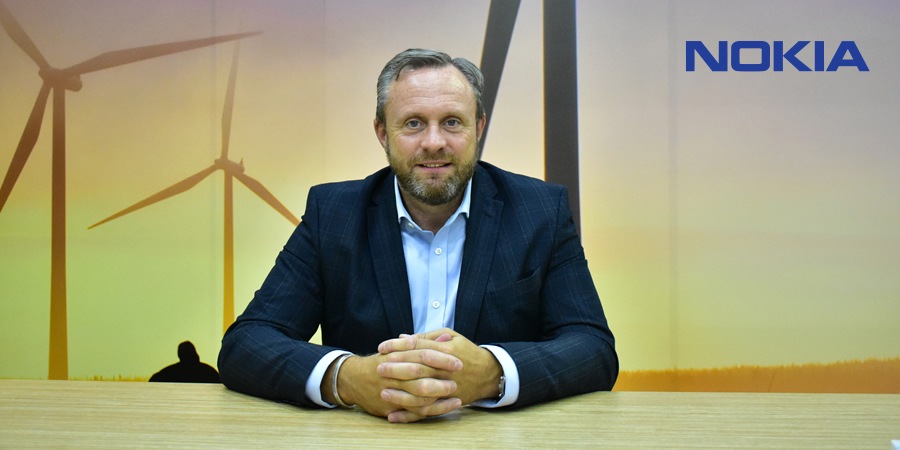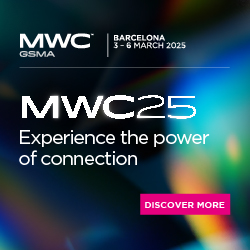In an exclusive with Telecom Review, Chris Johnson, SVP of global enterprise business, Nokia, shared the importance of industrial digitalization; the business strategies being deployed by the company for key enterprise segments; and which are among the existing and upcoming advanced digitalized solutions that will upgrade enterprises’ journeys.
Can you define the business strategies being deployed by Nokia for key segments and how do these drive profitable growth?
Nokia Enterprise is a very strategic part of Nokia's growth story. We look at this business in three dimensions: transport and access; big radio networks; and campus 4G/5G networks.
Firstly, transport and access networks — IP, optical fixed networks — form about 50% of our enterprise business today. Secondly, for big, traditional radio networks, we've been very successful for many years in railway telecom (GSM-R radio networks), in public safety (for police networks) and more recently, with energy companies building full-scale 4G private LTE networks.
Lastly is what we call “private wireless for campus.” This is the Industry 4.0 piece, which is the very new, high-growth and exciting part of the business where we're helping industries like manufacturing, energy production, wind farms, oil refineries, airports and any kind of factory develop advanced communications and connectivity as well as advanced hosting of software to enable those sites to become more productive and sustainable.
On the other hand, we also consider individual vertical markets. We have got subject matter experts in mining, manufacturing and airports, among other industries, to help get a deep understanding of those industries and deploy 4G/5G networks to provide optimal value for various verticals. And this has helped us become market leaders, especially in this industrial campus sector.
Vertical knowledge is really important, and the business is growing very fast. Hence, we see different kinds of growth in each of those segments I talked about, but in general, we've seen a very sustainable high growth for the last six or more years.
How can industrial digitalization bring resilience, productivity and sustainability to different sectors?
Industry 4.0 has been one of those buzzwords that we have in the industry. And you might think it will go away, but this is actually growing with significant productivity increases the industry witnesses with it.
There are certain industries where we've been able to replace connectivity — from Wi-Fi to 5G networks. For example, in mining, this quickly brings a productivity improvement because Wi-Fi does not have the high availability to support automated machinery. By having a much more resilient network, we instantly give them more uptime and productivity. The same would also be true in container ports, where there's a 24/7 shifting of containers from ships to trucks and vice versa, requiring operations to run around-the-clock.
That's the kind of first-level value where connectivity itself provides a much better service to those businesses. Relatively, there's the concept of “beyond connectivity,” where we're looking at factory environment that has a very complex set of processes — lots of machinery as well as old and new robotics. Thus, there’s a need to provide an environment where we can connect to everything and not just use the connectivity but also provide what we call an “intelligent edge platform” to allow the software providers to get access to data that we're collecting and turn that into real-productivity enhancements using artificial intelligence and big data techniques. This results in better and more efficient ways of running that factory environment.
It's not just about the connectivity; it's about what the connectivity can enable in those environments. We’re talking about the webscalers — Microsoft, Google, Amazon – the industrial players like Siemens’ MindSphere, ABB and the organizations that are building the productivity software in these industrial environments.
There are enormous productivity enhancements coming, which will provide an enormous economic advantage globally. Among the cool byproducts of Industry 4.0 is sustainability. As a result of becoming more efficient and productive, we're finding that our customers are using less raw materials, less energy and water, and their waste outputs are much lower.
What impacts Nokia enterprise customers the most in building their long-term success? How does Nokia respond to this?
I think what our customers need to be able to do is take advantage of technology, specifically software, the Internet of Things and the edge-based computing applications that Amazon, Microsoft, Google, Siemens and General Electric are producing.
The cloud edge is critical because a lot of the data that we will be extracting from the machines, things and assets in industrial environments needs software to interpret in real time and on site. It doesn't have time to replicate it to and from the cloud.
What we found out is that our customers need this concrete edge capability. Aligning not only the connectivity but also the edge infrastructure capability drives the software to run coherently with the data as it's running in real time. This allows industrial customers to make simulations and have instant impact on their environment by improving productivity. Our customers are not so much coming to Nokia for the connectivity; they're coming to Nokia to enable the cloud edge to be adjacent to the connectivity.
How will Nokia continue to upgrade enterprises' journeys with digitalized solutions?
We've got a ton of innovation going on. Our Nokia Bell Labs facility is developing early-stage new technologies to benefit the enterprise industry, while our business product groups are developing products to serve more enterprises.
To give you an idea, we developed a technology to be integrated with our 4G/5G campus networks called Mission Critical Industrial Edge (MXIE) platform. This is a kind of a neutral platform that allows us to host any cloud software, whether it's an internally developed platform from the customer, webscaler software or industrial solution software, to be implemented on our infrastructure in the customer site. And that's a real innovation integrated with our connectivity. That data can be extracted from the assets and the processes that are happening in the facility in real time and can be processed on the same platform. We're making lots of agreements, including that of Microsoft Arc, making their software compatible with the MXIE platform, and you will see many others coming.
The other area we’re working on is integrating a dashboard for different types of connectivity that exists within the customer landscape. So we’re not just implementing 4G/5G networks but also looking at how we might manage their existing Wi-Fi. In many industrial environments, we need to insert sensors into legacy processes that are typically Bluetooth-enabled with long-life batteries.
Additionally, devices in the industrial space are something we will continue to explore within Industry 4.0. Actual platforms, tablets, phones — often ruggedized for industrial environments — can all start to become an important part of the Nokia proposition. Thus, we will offer an end-to-end solution which is connectivity but also has the data interface that we provide to our customers. Using those devices as they roam around a customer site can also tell us about the network quality and allow us to make improvements, similar to a network management system. This is really interesting, especially to a bunch of our partner organizations that are trying to build management frameworks and network operation centers to manage the customer environment.
From a global perspective, what trends in the enterprise business scene will progress in the Industry 4.0 era?
One of the big macro trends that I see is in the energy utility space. Energy utilities are probably the most disrupted industry we see anywhere, considering the kind of geopolitics that is affecting the energy industry at the moment. They've always been under pressure to reduce prices and become more efficient for their customers. More and more want to connect their environment in a highly automated way.
Energy companies around the world are building big radio networks. In North America, we've seen a number of the energy utilities actually buying spectrum to enable themselves to build their own full-scale radio network, typically across a whole state. In Europe, we signed a project called 450connect in Germany, where a company was formed to build a 4G network to serve the energy services in the country. We see the same happening in Poland, potentially in the UK, Brazil and around the world.
I think the next one is the 4G/5G network campus theme. At Nokia, we were selling about 1,000 4G/5G networks in the campus space every year. We've been very strong in mining, ports, wind farms, and we have customers in just about every vertical segment you could think of. This is not just a trend; this is going to be an explosion of demand. We're really excited about what 5G networks can do in the industrial campus space.











